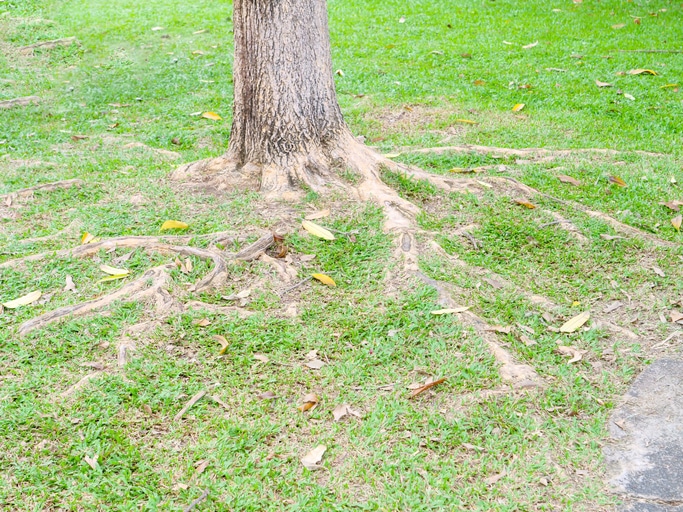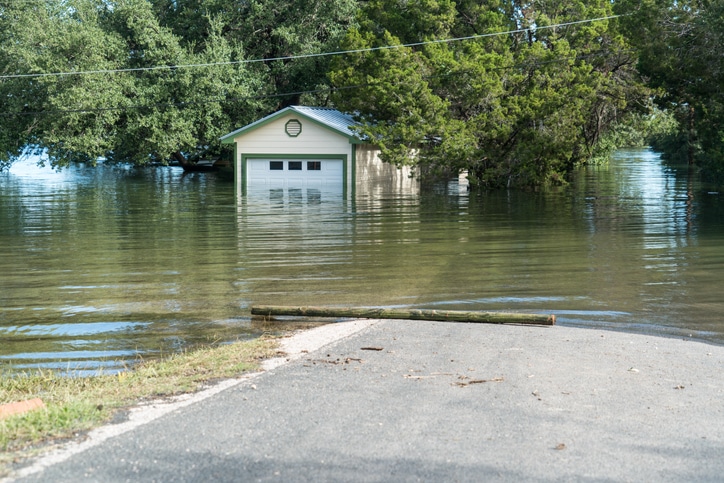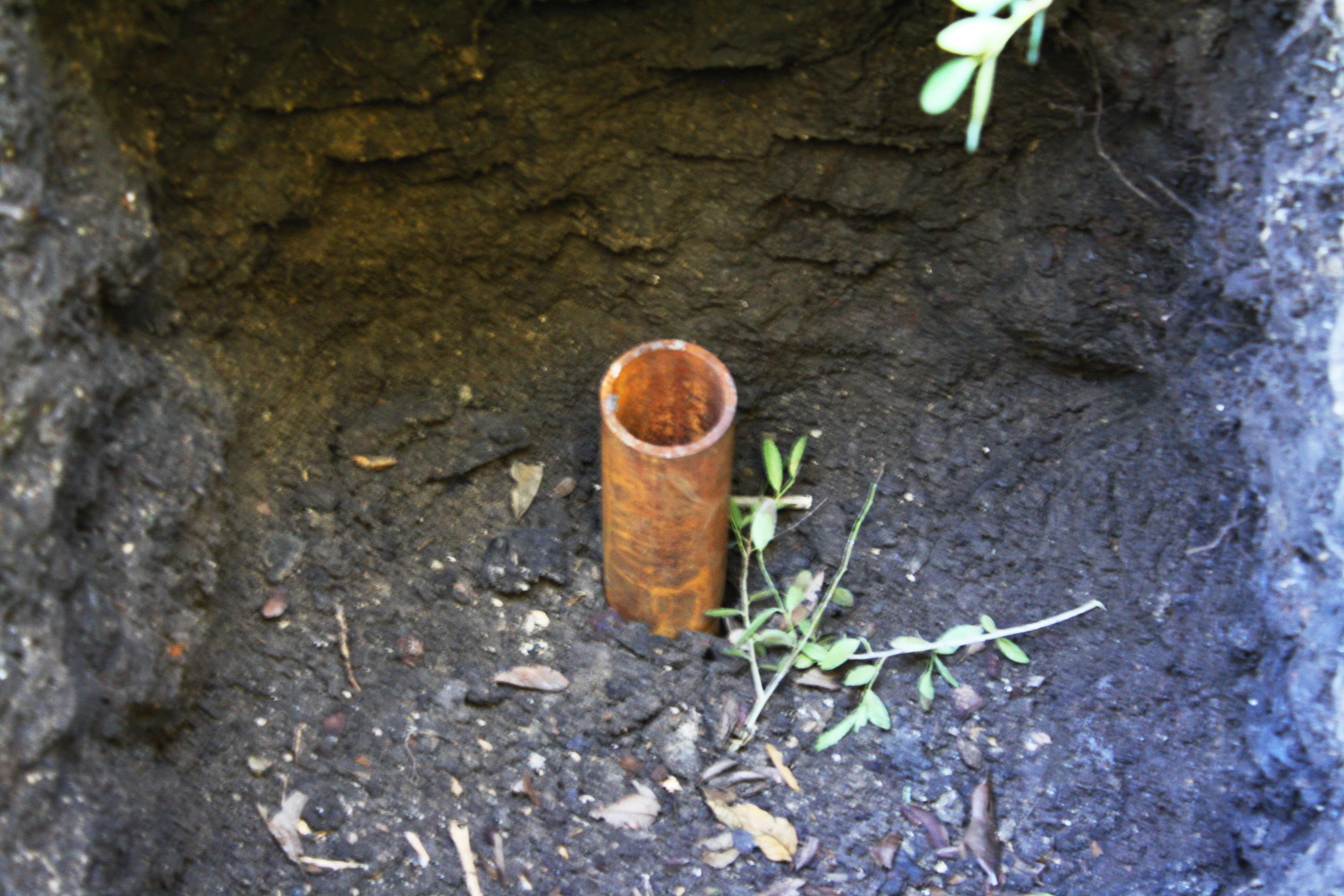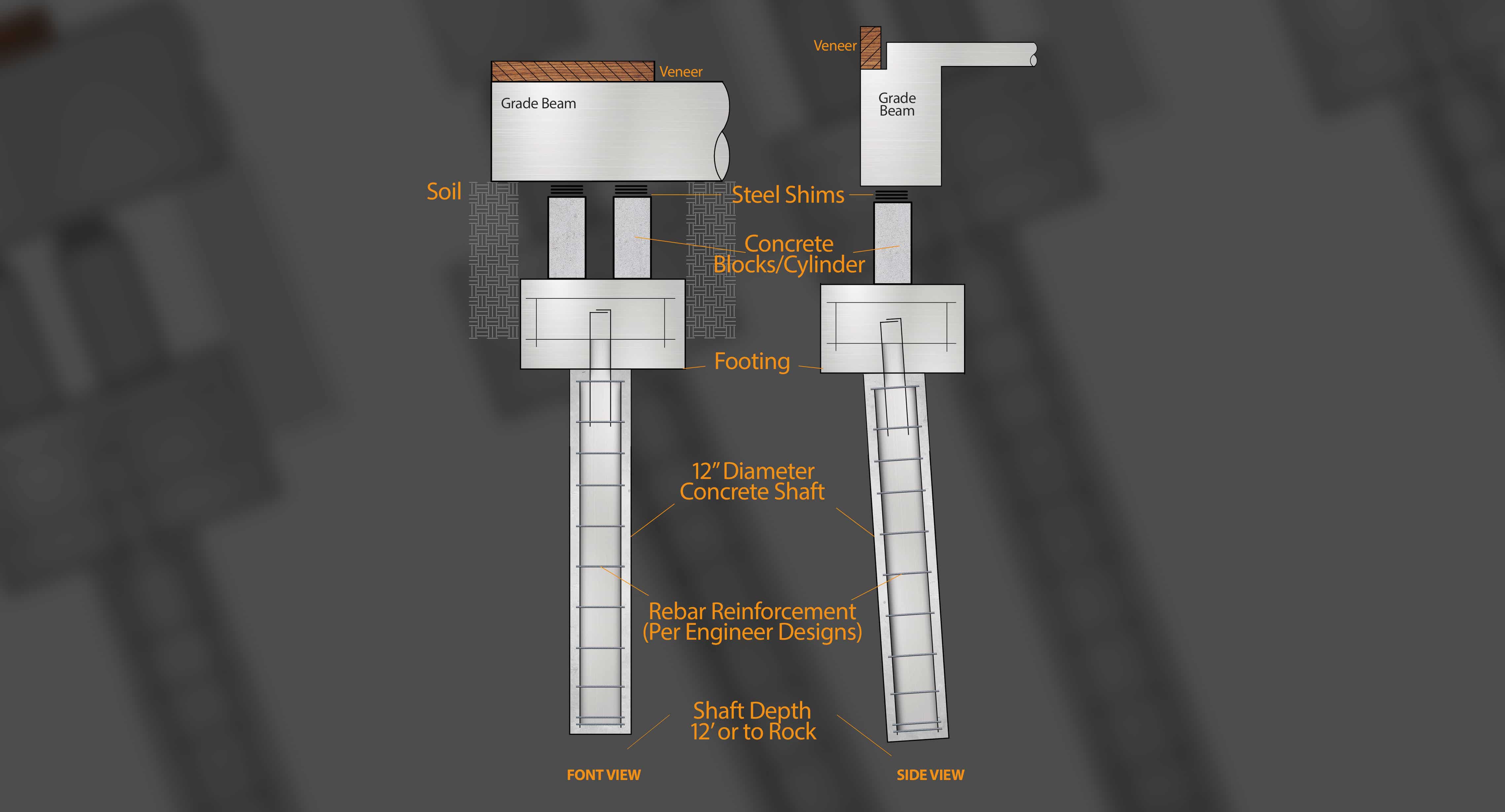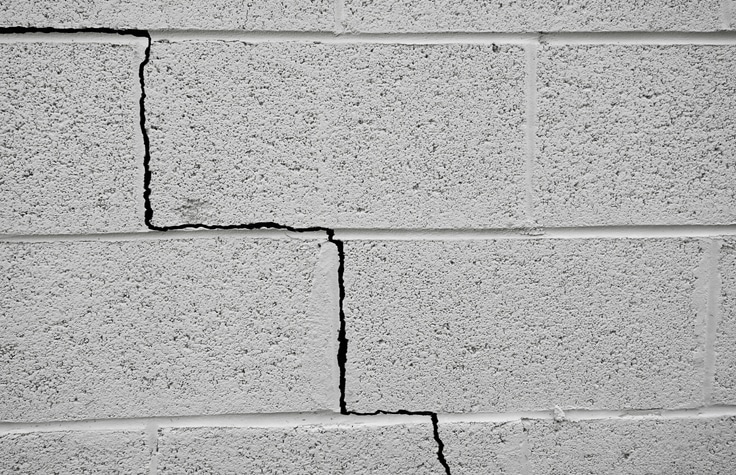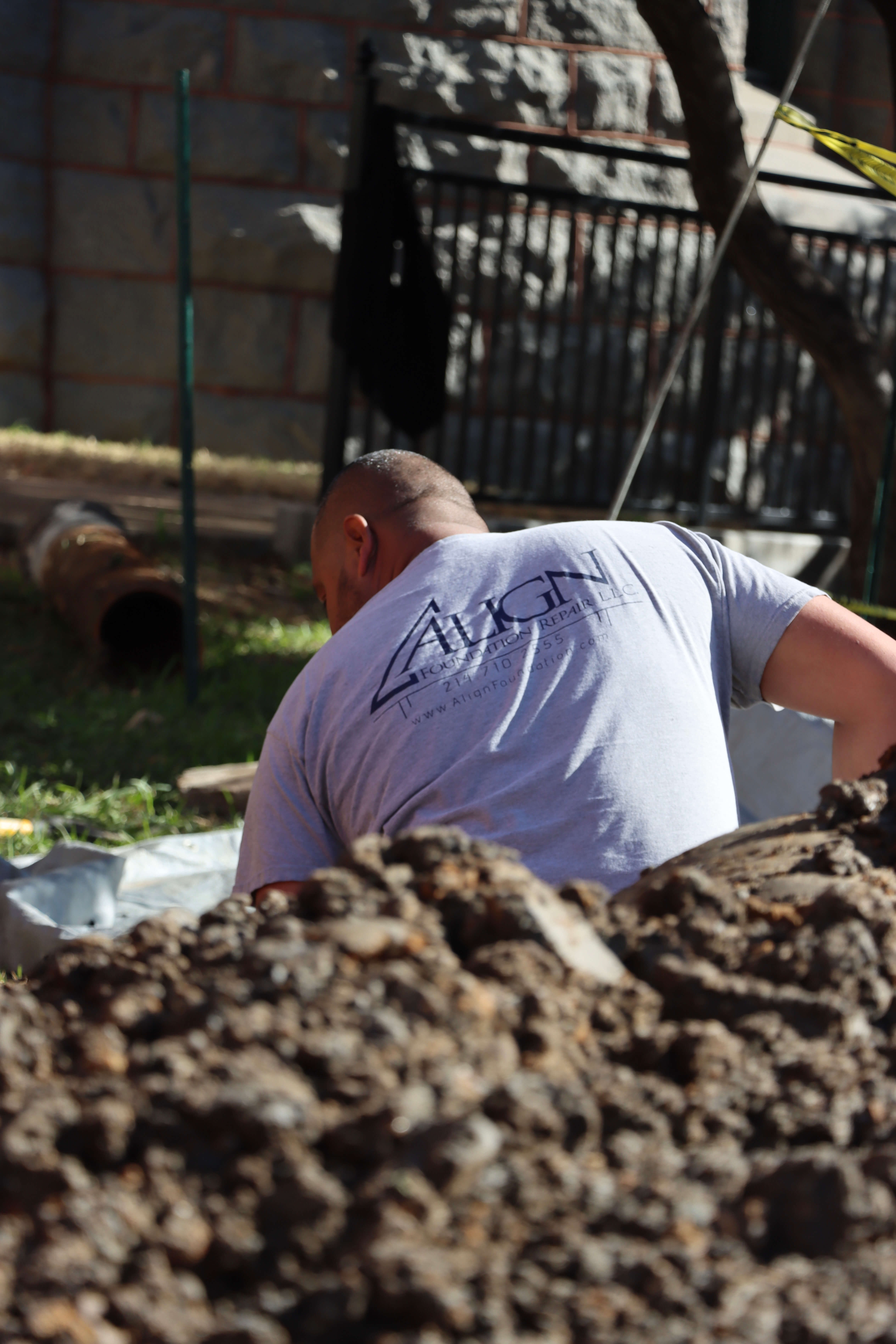Tree roots can extend to the soil beneath the home and cause shifting that leads to uneven flooring. A tree is far larger than what you can see. There is an entire extensive root system below the soil that can extend for meters. Though the root is out of sight, it shouldn’t be out of mind.
How Roots Can Damage the Flooring
Roots naturally grow in the direction of water and nutrients in the soil. A cracked plumbing pipe near the home can cause water to seep into the soil. This causes the roots to gravitate in that direction.
Contrary to popular belief, the roots themselves don’t cause direct damage. The roots typically don’t have the strength to split the concrete unless the concrete has pre-existing damage. Instead, the root disrupts the soil condition. The root can consume the soil’s moisture and nutrients. This leads to loose soil that is less able to support the weight of the foundation and floor. Soil requires moisture to retain solidity. Without it, soil becomes less compact.
Soil Type Plays a Role
The degree to which tree roots can inflict damage depends largely on the soil conditions. Soil containing heavy concentrations of clay compacts more easily, making it harder for roots to push through it. Soil consisting primarily of gravel and loose dirt, on the other hand, is less compact, making it easy for roots to navigate through. Soil with heavy sand composition is also really vulnerable since sand is moisture-dependent for retaining its solidity.
Some parts of the North Texas region contain soil of the loose dirt and sand variety. This makes uneven flooring from root intrusion commonplace.
What to Do if You Have an Intruding Tree
If you notice uneven or sloped flooring, a North Texas foundation repair expert will need to perform an evaluation to determine the cause. If a tree rests on your property, then it may very well be the culprit. If so, then the tree may need to be removed. When we say removed, we mean uprooted. It is not enough to just cut the tree and leave the stump behind; that means the roots also remain. If the root remains, the tree may be able to resprout.
Should You Remove Your Tree?
Even if the floor is fine, should you be concerned if you have a tree? Multiple factors are in play, such as the soil condition which we mentioned. The tree species matters as well. Some species grow longer root systems than others. Examples of trees with non-invasive roots include:
- Sugar, silver, and Norway maples
- Willow trees
- Oak trees
- Ash trees
These trees have shallow roots, usually extending only four to eight-inches below ground. Don’t forget, though, that distance matters as well. Trees should be planted no closer than 20 feet within your home, though even this rule isn’t ironclad. Once again, it depends on the tree species.
Have Uneven Flooring? Give Us a Call
Trees on your property may be causing unseen damage. If you suspect problems with your foundation, take action immediately. Contact us at Align Foundation Repair for a free estimate. An uneven floor foundation problem only exacerbates over time if ignored.

